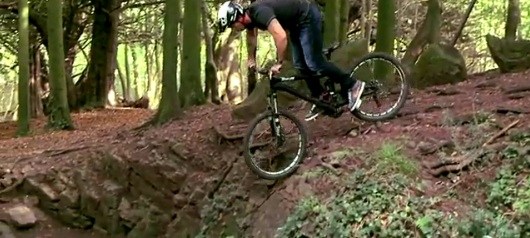
How Not To Do It
It all started with a Tweet.
Isn’t the information super highway so wonderful even though it isn’t a highway, not even a super one anymore. It’s something a lot less Smokie and the Bandit and something quite remarkably immersive. As recently as ten years ago I remember being told about a web that would allow us to feast on boundless information and I didn’t quite understand it. I just knew that my new email account was like a really swift fax machine. Now look at us, this Infobahn is all around us. Literally all around us because it is ever-present in an invisible broadcast waves of magic that allows us to be connected to it at all times. Cordless connectivity at all times in modern society.
Anyway, I wasn’t really here today to lose my mind in a mind-bending and mindless tautological gymnastics routine. Instead I wanted to talk about the act of communication. I want to talk specifically about one misguided act of communication. But first this internet B-road starts with a Tweet.

Several days ago, whilst killing time scrolling through Twitter I saw one particular Tweet that had the word coaching in it. It caught my eye and I clicked away on it and whoosh-bang I was transported at the velocity of a teenager’s speeding fist to a place far, far away. All whilst I was sitting still. Amazing. The place I was virtually flung to, down the shimmering freeway of binary bizarreness was a little video called ‘Vito Sport and BikeRidersUnited ‘How-to’: Drops’. I love coaching videos. I especially like coaching videos when they are done by professional riders. The reason I enjoy them so much is because it is like watching Nightmare on Elm Street when you are twelve years old; it is scary, really, really scary. Hide behind the couch and don’t sleep for a week properly scary. Not all how-to videos are this nerve-racking, but every so often you get a really bone-chilling, blood fest shocker.
I wasn’t disappointed with this one. This was the mother lode of under pant filling, hair-raising, harrowing coaching advice. It was like watching one of those crazy Eastern European films which are full of strobe light editing and seemingly disjointed imagery where one moment the main character is talking to his mother in a poppy field and the next minute there is footage of cavorting veiled virgins writhing in a black lit room as a sort of monster with the head of a carrot and fingers made of bus tickets licks the bloody body of the main character’s mother. In just the same way, this coaching video was scary and really perplexing.
Like I said at the start of this allegory stuffed mess it all started with a Tweet. And not the one that alerted me to this horror flick. The Tweet that really started it all was one by myself that, as tactfully as I could, pointed out that I thought this video was a rather poor coaching video. Nothing too slanderous or menacing. Just a little guff of Twitterism into the packed elevator that is the World Wide Willy (Warmer). However, someone actually read my twatty 140 character middle finger to the wind and approached me (via the internets that is) to ask why I thought this particular video was so bad.
Well, I planned on giving this chap a clear and concise explanation of my displeasure but as you may gather from the long winded lead into this story, the only thing I do briefly is anything that requires me to be dressed in only my briefs. Or less.
So I started crafting a quick email to this inquisitive fellow but by the time I finished the sky had gone dark and my cup of tea had gone cold. I began by trying to succinctly outline the major errors in the video and how I believed it should of perhaps been presented. However, what came out the other end of my keyboard and which I attempted to jam into the cyberspace of this chap’s email in-box ended up having more in common with the Norco Distribution catalogue.
I figured that a problem shared is a problem halved. So here it is. My constructive criticism and long-drawn-out dissection of what I think is a great example of why how-to videos need far more care than they receive. Hopefully throughout the course of reading this you will be encouraged to seek the help of a real life dedicated coach that speaks to you face-to-face and not through the glowing Jobsian windowpane in front of you.
Please understand one thing before we go any further, I respect Martyn Ashton hugely as a professional rider and my discourse is not meant as an attack on anyone in particular who was part of the production of this video. Rather I am burning them on an internet stake in order to make anyone else wary of making a mockery of a coach’s business. That doesn’t sound very nice does it? Well, sugar is nice. Sugar goes in tea. I’d be crap in a cup of tea. That’s reasonable reasoning isn’t it? But all jokes aside, by writing this I hope to outline why you can’t substitute proper coaching undertaken by a qualified and experienced coach with a video beamed onto your information superhighway carriage.
Before I go on I should add that I have my IDP levels One and Two from the Whistler Bike Park/Terramethod program and I have coached in New Zealand and BC, including several seasons in the Whistler Bike Park for WBP and other companies.
——–
Let me just recap Martyn’s coaching and I’ll add notes to each part. That way we keep it clear and ordered. I would suggest you watch the video first before reading any further. It helps to be educated about the uneducated.

Rolling drop
Step One: “Approach slowly and let the front commit.”
Let the front wheel commit? Shouldn’t it be the rider who commits? Or maybe some people’s front wheels have a life of their own. More so, how does the rider commit? This point is rather vague. It appears he is saying that riders should just let the bike carry them off the drop and zero rider input is required.
Step Two: “Lean back and as the speed of the bike quickens commit your weight into it so you are in the right position to roll out of the bottom. Compress your knees and just roll through it.”
Again, how vague this seems. But let’s start from the start of step two. Lean back? Really is that what Martyn is doing? Really? Watch the video again.
What happens is that Martyn stands in a neutral position but with his shoulders over the bars a little and lowers his body as front wheel leads over the drop. This is the committing part he talks about in Step One and rather than leaning back he is leaning forward slightly. Which is correct as there needs to be control over the front wheel, and the way to do this is with weight. As the front wheel rolls over the drop the riders arms extend away from them to “lead” the front wheel over the drop. You are effectively pushing the bike away from your mass momentarily but first you are not leaning back, but leaning into the roll.

Then as the rear wheel begins moving upwards in relation to the body as the body moves down the drop. What he is doing is absorbing the force of the rear wheel moving upwards by flexing his legs until the rear wheel passes the lip of the drop. This is the compressing of the knees Martyn talks about and the “just roll through it” is where he extends the legs to “lead” the rear wheel down to the landing.
Instead how about this:
1. Approach the drop in the neutral position.
2. Speed should be no more than walking pace.
3. As you approach the drop, shift shoulders slightly forward over the handlebar. This allows a clearer look over the drop and provides the basis for a greater range of movement for subsequent steps. Keep looking past the edge of the drop to the landing area
4. Lead the front wheel down the drop by extending the arms and pushing the bike ahead of you down the drop.
5. The body should be lowered by flexing the legs and absorbing as the rear wheel moves upward in relation to the body.
6. As the rear wheel comes off the drop, extend the legs to “lead” the rear wheel down to the landing.

Flying drops…is that the name this should be given?
“The difference between rolling a drop and flying off it is the pace you do it at. To fly off the drop you have to make sure you are going quick enough. There’s nothing worse than not having enough speed, you go off too slow. You get the front up but you haven’t got the pace to hold it up and it drops and you have this steep drop onto the front wheel.”
Speed is not the answer. You can not take elementary movements like drops and explain them to beginners or novices by saying that they need speed. Firstly, not everyone is comfortable at speed, especially when they are learning. Secondly, not everyone is capable of achieving speed, especially when they are learning. And thirdly, it is not at all about the speed of the bike in relation to the drop, but rather the efficiency of the dynamic movement that a rider puts into the bike. Let me explain.
Step One: “You gotta go nice and fast, really commit to it and make a quick decision about it meters before you fly off it. Weight back, arms nice and strong. As it goes out get ready to absorb the landing. And as long as you are ready it don’t matter about the landing much. Forget about it, just be ready for it. Just ride out nice and fast. Most important thing is committing and going nice and fast.”
Where to start with this one. This whole paragraph is a car crash. Sorry, multiple bike crashes waiting to happen.
First speed: beginners, are not always able or willing to go fast and often don’t have the timing and coordination that is required to do this technique when everything is moving fast. They also don’t have the pressure control, or range of motion required to do what Martyn is saying. You have to keep things slow. Start small, start on the ground doing lunges on the flat ground to get them to dial in their timing, coordination and the dynamic movement required of this technique.
Try telling a petite timid novice woman to just go fast at a drop and have “arms nice and strong”. It won’t work. Trust me. However, that same timid woman can be taught to do excellent drops.
One good thing Martyn alludes to is “make a quick decision about it meters before you fly off it”, which is referred to as the Point of Commitment. This is an imaginary line that the rider builds into their approach to a drop (or any obstacle on a trail, be it a jump, a rock garden, a roll over, and root section). This imaginary line is the point at which a rider can slow down and safely stop before the drop if they second guess. At this point the rider must know that if they second guess and perhaps touch their brakes or pedal going off the drop they will be negatively influencing the dynamics of themselves over the bike and setting themselves up for potential failure. Imagine pedaling up the face of a jump, or braking as your wheel takes off from the drop. It is not going to be good. So coaches encourage riders to always be building Points of Commitment into their trails. It is a safety thing. Martyn alluded to this but didn’t explain it.
“Weight back, arms nice and strong.”
Weight back? Really? So he is expecting people to hang off the back of their bikes as they go off the drop? Just consider what this might do to the bike. What he is trying to say (and I say this because looking at the video it is exactly what his body is doing even if his mouth isn’t communicating it) is that you should be pushing the bike FORWARDS. Yes, that is right, forwards. That way it is accelerating the bike in relation to the body. You don’t need to go fast, you need to be able to forcefully and positively accelerate the bike in front of you. This will stop what Martyn talks about when he says, “You get the front up but you haven’t got the pace to hold it up and it drops and you have this steep drop onto the front wheel.”
You are not trying to manual off the drop – that could lead to rear wheel landings, flipping over the back of the bike and does not translate as safe or efficient for larger drops. What you are attempting is to push the bike outwards straight ahead in order to decrease the amount of time that the rear wheel remains on the drop. Use your arms to do this but also flatten your back and use the power in your thighs to do the same. The power in your thighs is much greater than your arms. It is to be noted that the slower your are rolling the more push you need to do.
As I said earlier, treat the movement like the finishing line lunge at the Tour De France. At first practice on flat ground to get the range of movement. Then etch a line in the dirt and introduce the timing and coordination required. Use a curb perhaps.
Using this dynamic lunge technique (also known as the Peek and Push) works for anyone. This eradicates the need for speed and instead puts the emphasis on the rider input. And don’t just think this is a beginner technique; today whilst riding on Fromme I came across a sudden drop off a rock and I had no speed but the lunge helped me. Even Wade Simmons used the same technique.

Step two: “As it goes out get ready to absorb the landing. And as long as you are ready it don’t matter about the landing much. Forget about it, just be ready for it. Just ride out nice and fast.”
It doesn’t matter about the landing? Really? So landing front wheel heavy is O.K.? Landing on your back wheel is O.K.? Forget about it AND be ready for it? At the same time? How is it possible to forget about anything AND be ready for it? Weird. Ride out nice and fast? What does that mean? Hit the ground and start pedaling? Start pedaling before you land? Perhaps it means don’t slow down in the air. This whole section is a shambles.
The correct way should be an extension of the rolling drop technique. We call it a Lunge Drop or the Peek and Push Technique.
How about this:
1. Approach in neutral position. Speed at jogging pace before reaching Point of Commitment – Note that you should be able to demonstrate to students that with a powerful and full lunge you should be able to do the drop at almost no speed at all. So long as the drop does not have a gap. But then you won’t be teaching on a gap to drop class beginners. Speed is not the key, a full range of movement and timing is.
2. As you approach drop shift shoulders slightly forward over bars. Load and compress down into the bike just before the drop. This will help unweight (not lift) when you leave the drop. This is the PEEK.
3. Keep looking past the edge of the drop to the landing area.
4. Just before the edge of the drop (approx 4 inches back) lunge the bike straight ahead in order to decrease the amount of time that the rear wheel remains on the drop. Rather than using the very edge of the drop, this allows a small margin for timing error. Something that is quite common when learning.
5. As the riders mass pushes the bike in front, it will lower in relation to the bike and the rear wheel will begin to rise in relation to the rider. Absorb the rear wheel by bending the legs until it passes over the edge of the drop.
6. As your arms are extended look through them to spot landing still. When off the drop, extend arms and legs to match the bike’s angle to the landing, and move to be more centered over the middle of the bike and absorb any impact from landing. This is putting the landing gear down and having legs and arms poised. Flexed in readiness not locked straight.
Try to land both wheels simultaneously.
In the end it is all simple physics rather than magic and guessing games. However, it isn’t rocket science. Or indeed, sprocket science.
To add one last point, as you can see Martyn’s riding technique is very good. However, it is the way he thinks it is broken down and the terminology that he explains it in that is totally off kilter. How he does the drops and how he explains them are totally at odds with each other. Communication is the key to good coaching. A good coach is a good rider but also a great communicator.
My explanations may use some technical language but that is simply for the benefit of writing it down. Firstly you need common terms so that everything is clear. Secondly, if I was explaining these techniques to someone and I felt they would not benefit from using such language then I would switch to using terminology and metaphors that they would commonly understand. When I am teaching drops in this style I refer (as does most of the coaching industry) to Lunge Drops or the Peek and Push Technique, and often when explaining the dynamic movement to students I will refer to it as the Finish Line Push. You know, the last push that cyclists do when they are crossing the finishing line to accelerate their bikes and win. Yes win. Cause that’s what we are going to achieve when we learn to do drops safely and correctly. [insert cheesy finger gun salute]
It is irresponsible for uneducated and unqualified riders to give out advice just so they can advertise their sponsor’s goods if the coaching is sub-par. This video is simply a way of advertising an automobile and the riders’ other sponsors. It is sad that bad coaching should accompany it.
I hope not to be negative towards the people behind the video, but rather point out the wrongdoings, or at least the miscommunicated information. I hope this illustrates that there is a big difference between having a coach who has learnt the correct teaching techniques and spent time learning how to communicate them and a well meaning professional who may be a great rider but not a coach.
If more people spent time and money with a good coach rather than on the Chain Reaction website or Pinkbike they might end up becoming much better, safer riders who can have more fun. It burns me when I see a bad video like this.
Thanks and credit has to go to Mike Johnstone from TerraMethod and the IDP that he has developed. Some of the information contained above was gleaned from his manuals.
There are more and more coaching organizations springing up each year. At present there is no governing body for the standardization of teaching coaches but there are some quite excellent coaching organizations. Those that I have direct experience of and who I highly recommend would be Paul at Zep Techniques, Darren Butler and his cast of excellent coaches at Endless Biking and selected coaches at the Whistler Bike Park. Amongst those on the WBP staff I would suggest looking for Mike Johnstone and Ken Doraty. They are both highly experienced, knowledgeable and approachable.
If you’d like to see the video to which I’m referring again, or if you missed it the first time, click here…
Was Seb a little harsh? I would bet that a lot of the blame must be pointed at the producers of the video. They were likely more concerned about length and the presentation of the vehicle than about any useful coaching. Your thoughts below…







Comments
Please log in to leave a comment.